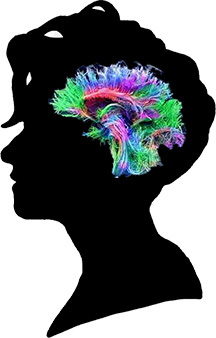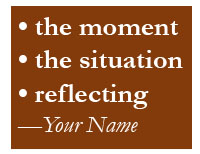Introduction
 Reflection is an important part of the structure of the Pedagogy of Confidence, with both students and educators. It is an important element of the Pedagogical Flow Map for both students and educators growth.
Reflection is an important part of the structure of the Pedagogy of Confidence, with both students and educators. It is an important element of the Pedagogical Flow Map for both students and educators growth.
Teacher (Self) Reflection. This is the point in the lesson when the teacher confirms that students are ready to independently read the text and engage in independent or group activities. The teacher makes this judgment by reflecting with the students about the learning experience thus far and the features that have been built into the unit to support the students’ learning success. The shared model of self-reflection offers the opportunity for dialogical thinking (hearing the teacher’s perspectives) and provides additional entry points for further clarification or for development of new perspectives and insights.
Student Reflection. Student reflection may involve a self- or peer-check on understanding or a judgment about being ready for an assessment. In addition, students may be invited to think about personal references they could make and what they have learned about themselves as learners after concluding the unit study. This PFM step can readily be combined with others. For example, students can be invited to reflect on what they have learned when they are confirming their understanding of the central concept or theme of the lesson.
Jackson, Yvette. The Pedagogy of Confidence: Inspiring High Intellectual Performance in Urban Schools (p. 167). Teachers College Press. Kindle Edition.
There are many ways one can be reflective, and the ideas below are suggested as a thoughtful ideas to both have a method to be reflective that helps students and educators to think deeply forward as a reflective community. It is recommended to keep these ideas in a location (e.g. a composition book or online portfolio book) to see progression, with access to look back at entries.
On this page there are multiple ways of reflection including steps and examples for:
- Haiku
- Metaphors
- Similes
- Symbols
- A Visual Map
- Acting Out
———
Haiku
A haiku is traditionally a Japanese poem consisting of three short lines that do not rhyme. A haiku is considered to be more than a type of poem; it is a way of looking at the physical world and seeing something deeper, like the very nature of existence
For the purpose of the reflection, it is recommended sharing several examples of haiku in regards to the purpose with each of the three lines. It is best to let the reflections then be organic from the heart. It is recommended the facilitator of a professional development make up a haiku in the moment about the day just like the participants are being asked to do as a modeling. It is good to practice this prior to doing with the students in a classroom or participants of a staff for professional development. This provides the reflections being open, with a humble feeling, and confident in the reflection of doing.
Haiku Reflection Sequence
The sequence of a haiku for reflection should take only five to ten minutes at most. The latter time is if many or all share in voice.
- Share examples of haiku such as the ones below. Further haiku examples can be found searching the web including on the Poetry Foundation website.
 Create a haiku for the day modeling to the class or professional development participants.
Create a haiku for the day modeling to the class or professional development participants.- Have one student or participant model creating a haiku about the day aloud.
- Have all participants create a haiku.
- Have each participant share their haiku.
—virtual use the chat feature and audio
—in a classroom on paper and speaking
It is recommended having a book of reflections that can be in haiku, metaphor, simile, symbol, a visual map and a sequence map for any acting out representations.
Creating your haiku.
- First line is the moment (look at the examples on this page)
- Second line is the situation happening (examples)
- Third line is your reflective outcome of the day (examples)
- Add your name below your haiku.
Examples:
The snow is melting
and the village is flooded
with children.
—Issa
Calm and serene,
the frog gazes
at the mountains.
—Issa
In the August grass
Struck by the last rays of sun
The cracked teacup screams.
—Etheridge Knight
Haiku and Tanka for
Harriet Tubman
by Sonia Sanchez
Picture a woman
riding thunder on
the legs of slavery …
—Sonia Sanchez
Picture her rotating
the earth into a shape
of lives becoming …
—Sonia Sanchez
———
Metaphor
a figure of speech in which a word or phrase is applied to an object or action to which it is not literally applicable.
For the purpose of the reflection, it is recommended sharing several examples of metaphors in regards to the purpose with each of the three lines. It is best to let the reflections then be organic from the heart. It is recommended the facilitator of a professional development make up a metaphor in the moment about the day just like the participants are being asked to do as a modeling. It is good to practice this prior to doing with the students in a classroom or participants of a staff for professional development. This provides the reflections being open, with a humble feeling, and confident in the reflection of doing.
- Share examples of metaphors such as the ones below. Further metaphor examples can be found searching the web.
- Create a metaphor for the day modeling to the class or professional development participants.
- Have one student or participant model creating a metaphor about the day aloud.
- Have all participants create a metaphor.
- Have each participant share their metaphor.
—virtual use the chat feature and audio
—in a classroom on paper and speaking
It is recommended having a book of reflections that can be in haiku, metaphor, simile, symbol, a visual map and a sequence map for any acting out representations.
Creating Your Metaphor
- First line
- Second line
Examples
“If you want a love message to be heard, it has got to be sent out.
To keep a lamp burning, we have to keep putting oil in it.”
—Mother Teresa
xx
Recommendations to Read
Metaphors We Live By – George Lakoff
Black Metaphors: How Modern Racism Emerged from Medieval Race-Thinking (The Middle Ages Series) – Cord J. Whitaker
———
Simile
sim·i·le
/ˈsiməlē/
noun
a figure of speech involving the comparison of one thing with another thing of a different kind, used to make a description more emphatic or vivid (e.g., as brave as a lion, crazy like a fox).
For the purpose of the reflection, it is recommended sharing several examples of similes in regards to the purpose with each of the three lines. It is best to let the reflections then be organic from the heart. It is recommended the facilitator of a professional development make up a simile in the moment about the day just like the participants are being asked to do as a modeling. It is good to practice this prior to doing with the students in a classroom or participants of a staff for professional development. This provides the reflections being open, with a humble feeling, and confident in the reflection of doing.
- Share examples of similes such as the ones below. Further simile examples can be found searching the web.
- Create a simile for the day modeling to the class or professional development participants.
- Have one student or participant model creating a simile about the day aloud.
- Have all participants create a simile.
- Have each participant share their simile.
—virtual use the chat feature and audio
—in a classroom on paper and speaking
It is recommended having a book of reflections that can be in haiku, metaphor, simile, symbol, a visual map and a sequence map for any acting out representations.
Creating Your Simile
- First line
- Second line
Examples
- You were as brave as a lion.
- They fought like cats and dogs.
- This house is as clean as a whistle.
- He is as strong as an ox.
- Your explanation is as clear as mud.
- Watching the show was like watching grass grow.
author examples
———
Symbol
A symbol is a mark, sign, or word that indicates, signifies, or is understood as representing an idea, object, or relationship. Symbols allow people to go beyond what is known or seen by creating linkages between otherwise very different concepts and experiences.
For the purpose of the reflection, it is recommended sharing several examples of symbols in regards to the purpose with each of the three lines. It is best to let the reflections then be organic from the heart. It is recommended the facilitator of a professional development make up a symbol in the moment about the day just like the participants are being asked to do as a modeling. It is good to practice this prior to doing with the students in a classroom or participants of a staff for professional development. This provides the reflections being open, with a humble feeling, and confident in the reflection of doing. Symbols can be created with hand drawings, collage (hand or computer) or even 3D.
- Share examples of symbols such as the ones below. Further symbol examples can be found searching the web.
- Create a symbol for the day modeling to the class or professional development participants.
- Have one student or participant model creating a symbol about the day aloud.
- Have all participants create a symbol.
- Have each participant share their symbol.
—virtual use the chat feature and audio
—in a classroom on paper and speaking
It is recommended having a book of reflections that can be in haiku, metaphor, simile, symbol, a visual map and a sequence map for any acting out representations.
Creating Your Symbol
- The idea
- Representing in Drawing
Examples
———
A Visual Map
Visual mapping is the graphical organization and presentation of knowledge. It includes concept maps, mind maps, conceptual diagrams, and visual metaphors. Visual mapping can be done using low tech paper and pens or high tech using real-time digital tools.
For the purpose of the reflection, it is recommended sharing several examples of visual maps in regards to the purpose with each of the three lines. It is best to let the reflections then be organic from the heart. It is recommended the facilitator of a professional development make up a visual map in the moment about the day just like the participants are being asked to do as a modeling. It is good to practice this prior to doing with the students in a classroom or participants of a staff for professional development. This provides the reflections being open, with a humble feeling, and confident in the reflection of doing.
———
Acting Representation
(record on video)
The use of voice and movement to communicate an idea and meaning.


